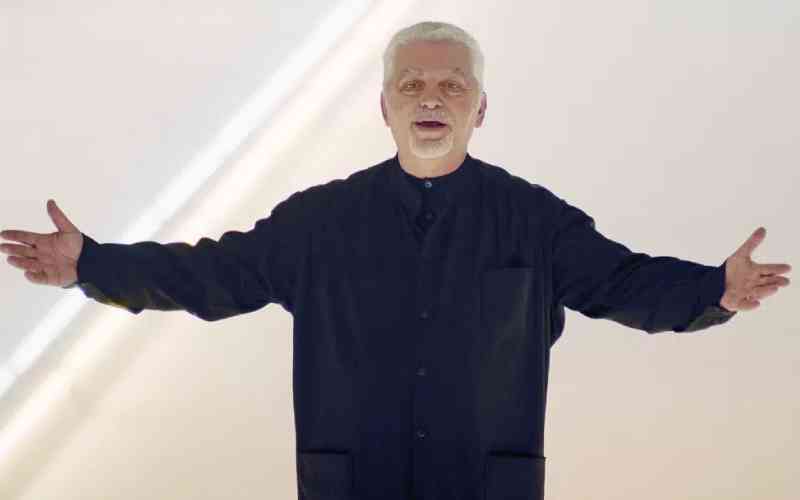
Paco Rabanne, the Spanish-born designer known for perfumes sold worldwide but who made his name with metallic space-age fashions that put a bold, new edge on catwalks, has died, the group that owns his fashion house announced Friday.
“The House of Paco Rabanne wishes to honor our visionary designer and founder who passed away today at the age of 88. Among the most seminal fashion figures of the 20th century, his legacy will remain,” the statement from beauty and fashion company Puig said.
The newspaper Le Telegramme quoted the mayor of Vannes, David Robo, as saying that Rabanne died at his home in the Brittany region town of Portsall.
Rabanne’s fashion house shows its collections in Paris and is scheduled to unveil the brand’s latest ready-to-wear designs during the upcoming Feb. 27-March 3 fashion week.
Rabanne was known as a rebel designer in a career that blossomed with his collaboration with the family-owned Puig, a Spanish company that now also owns other design houses, including Nina Ricci, Jean Paul Gaultier, Carolina Herrera and Dries Van Noten. The company also owns the fragrance brands Byredo and Penhaligon’s.
“Paco Rabanne made transgression magnetic. Who else could induce fashionable Parisian women (to) clamor for dresses made of plastic and metal? Who but Paco Rabanne could imagine a fragrance called Calandre — the word means ‘automobile grill,’ you know — and turn it into an icon of modern femininity?” the group’s statement said.
Calandre perfume was launched in 1969, the first product by Puig in Spain, France and the United States, according to the company.
Born Francisco Rabaneda y Cuervo in 1934, the future designer fled the Spanish Basque country at age 5 during the Spanish Civil War and took the name of Paco Rabanne.
He studied architecture at Paris’ Beaux Arts Academie before moving to couture, following in the steps of his mother, a couturier in Spain. He said she was jailed at one point for being dressed in a “scandalous” fashion.
Rabanne sold accessories to well-known designers before launching his own collection.
He titled the first collection presented under his own name “12 unwearable dresses in contemporary materials.” His innovative outfits were made of various kinds of metal, including his famous use of mail, the chain-like material associated with Medieval knights.
Coco Chanel reportedly called Rabanne “the metallurgist of fashion.”
French President Emmanuel Macron and his wife, Brigitte, saluted “an uncommon artist who blew the wind of renewal into the world of haute couture,” his office said.
Paco Rabanne was among the first designers to put Black mannequins on the runway, and in 1983 opened Centre 57, devoted to the Black African and Caribbean diaspora. Artists, musicians, film-makers and hip-hop dancers frequented the center for several years, the statement from Macron’s office noted.
“My colleagues tell me I am not a couturier but an artisan, and it’s true that I’m an artisan. … I work with my hands,” he said in an interview in the 1970s.
In the interview given when he was 43 years old and now held in France’s National Audiovisual Institute, Rabanne explained his radical fashion philosophy, revealing a dark side of his complex character.
“I think fashion is prophetic. Fashion announces the future,” he said at the time, adding that “the future for me is catastrophic.”
Sure enough, the designer predicted a major catastrophe on Aug. 11, 1999, claiming that the Russian MIR space station would fall on France. Instead, a crowd opened champagne at his Left Bank headquarters for a “survivors’ party.”
Paco Rabanne retired in 2000, and the house didn’t field a runway show for five years, from 2006 until the spring-summer 2012 show.
But the creator has also said that women are harbingers of what lies on the horizon.
The president of the Association of Fashion Designers of Spain, Modesto Lomba, said Rabanne “left an absolute mark on the passage of time. Let’s not forget that he was Spanish and that he triumphed inside and outside Spain.”
Related Topics